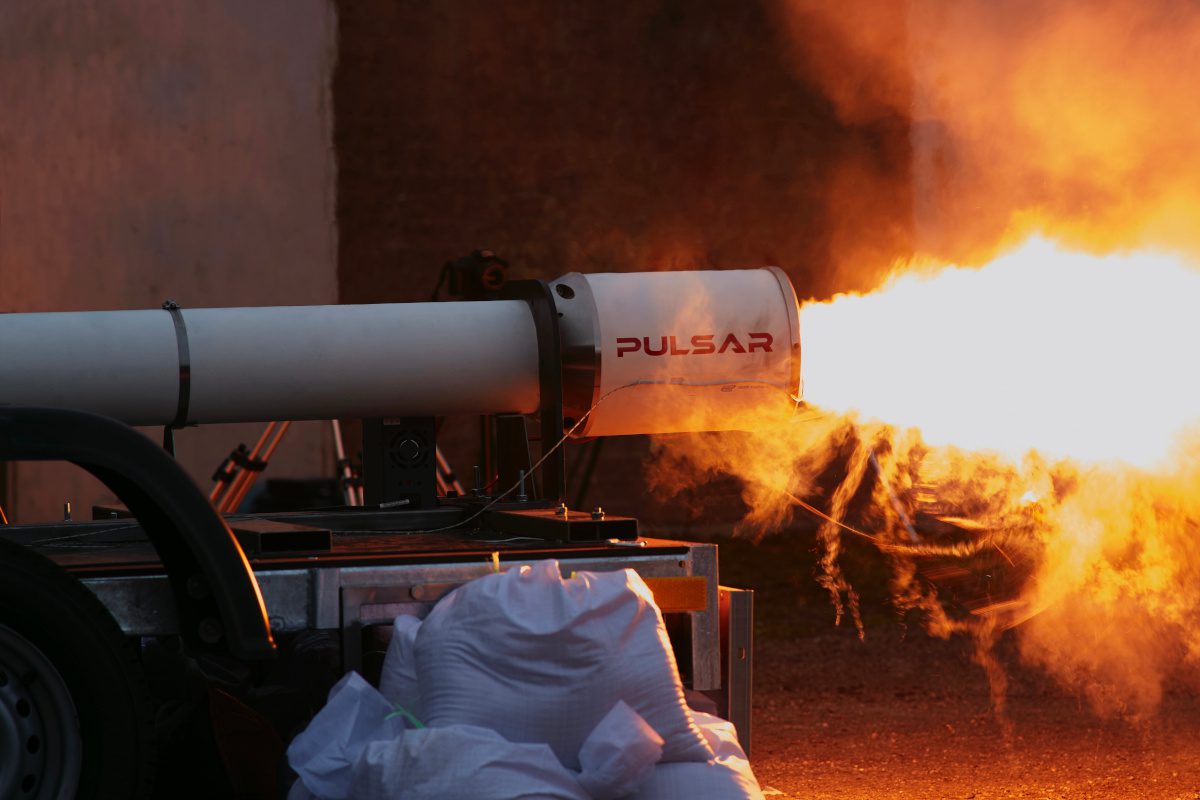
A UK company based in Bletchley has developed and tested a high-power chemical rocket engine partly fuelled by plastic waste.
Developed by Pulsar Fusion, the rocket is powered by high density polyethylene (HDPE) – from recycled plastic – and nitrous oxide. The two fuels seemingly burn together to produce a non-toxic plume, says the firm, a relative rarity in itself.
Pulsar Fusion says the rocket engines could be used for a variety of applications, including launching people and satellites into space.
The UK acceptance tests at COTEC, the Ministry of Defence military base in Salisbury, took place on 17 and 18 November. These were static tests, and were to be followed by an international demonstration in Switzerland on 25 November.
The hybrid rocket engine has demonstrated visual plume effects such as supersonic shock diamonds typical of a high temperature, high-mass-flow-rate rocket exhaust.
CEO Richard Dinan, commented: “We are delighted with the UK test firings at COTEC. It is a hugely significant moment and we are proud this rocket is built in the UK. To have a British rocket test on UK soil is novel.
“Pulsar is among a very few companies around the world to have built and tested these technologies. We have a team of fantastic scientists with a wealth of experience to thank for these milestones. We have also drawn talent from some of the UK’s top universities who have begun working with and testing our plasma thrusters at campus facilities.”
Pulsar’s ‘green’ (non-toxic) hybrid rocket engine combusts nitrous oxide (N2O) – a powerful oxidiser at high temperatures – and high-density polyethylene (HDPE) fuel and oxygen. It is a new model that Pulsar says holds the key to being able to manufacture compact rocket engines at record lead times. The firm also says the design ensures the engines have relatively benign failure modes compared to conventional liquid propulsion engines.
A hybrid rocket engine has the following main components and requires control of only one fluid: a liquid oxidiser during testing. Liquid oxidiser is fed under a regulated pressure through a control valve into a combustion chamber containing a technology as proprietary.
Pulsar Fusion received UK government funding in September 2021 to further develop its HET (Hall Effect Thruster) plasma satellite engines, capable of 20 km / second particle exhaust speeds. These Pulsar thrusters have recently been tested at Harwell’s facilities where they withstood 20g’s of vibration, simulating a rocket launch. Pulsar now seeks to IOD test these engines. (In Orbit Demonstration).






